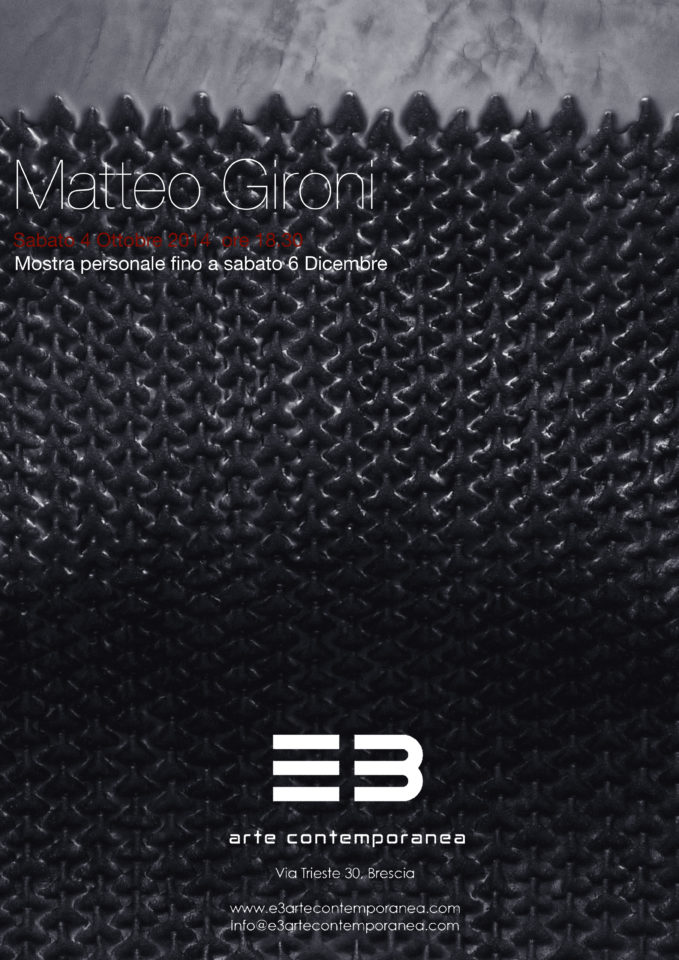MATTEO GIRONI
ottobre – dicembre 2014
Matteo Gironi. According to the Nature
The first impact is visual.
Sinuous forms that stretch and draw back on the surface of the gaze, the works of Matteo Gironi welcome the matter of felt, beeswax, pigment color in a surprising embrace of skins stretched, velvety, malleable, ready to welcome the ‘unpredictable happen in life that transforms them, marking them so slight or decided.
Works such as the daily change metaphors, yet full of a secular knowledge in their membership decided to contemporary. Precious treasures on which the artist inscribes the knowledge of the tradition of innovation. As a long time the tables of wax welcomed the experience of human life, thus the work of Gironi has the quiet and unpredictable wisdom of the ancients, though addressed to us moderns. Or rather, postmodern.
The nature and history. The problem of the shape and the identity of the material. The necessity of things. Freedom of thought declared, always by doing.
These are the points of departure and eternal return on which there is the plot of the artistic research of Gironi, whose training in the field of architecture, which is accompanied by the ever question the meaning of build and design, engrave with a certain depth on his artistic investigation.
And indeed, if we look at them, his works are artworks aware of the history of architecture, and architectures aware of the history of art.
Less explicit, protected by the same artist as intimate secret of his poetry in the changing textures of the works, is the deep thought that has taken him, over the years, to choose to investigate the material, to question him in his natural needs, and then to turn and form it into artworks of high aesthetic workmanship.
In this proceeding, emerge the architectural models, one of Frank Lloyd Wright and one of Louis Kahn: the first, in dialogue with the Great Spirit of Nature, in a careful research for the deep identity in things; the second, able to interrogate the bricks, and to listen to their wanting to be arches.
Matteo Gironi asks the felt, interrogates the wax, and queries the color pigment. He lets himself to be questioned by these elements. He works with a manual, female inspiration, rejecting the peremptory, metaphorically masculine imposition on the matter. Rather, it favors and stimulates reactions in the materials, interweaving and overlapping them with the patience of the unknown.
Forms of extraordinary musicality, his works so welcome the change in the repetition of a fragment original and originating, obtained with the peculiar curvature of the felt, material that naturally offers in this research. From the first artworks, where the modules are larger, less dense textures, shadows and concavity more pronounced, to the most recent, where the refinement of the technique results in surfaces of refined modularity, his artworks are monumental and wide valleys, where signs in landscape stand or hide, pointing the way to the eye.
It is the monumentality of the fragment, from the first stone laid by man, the menhir as a ordering of space, to interest the artist who gives this function to the modules of his works, called to measure the space of the introflections. And the same thing happens in the Baroque ceilings, where are painted figures are called to measure the space: so says Gironi, recalling another infinite network of references changeable as his works, from today until the Baroque, another important ground of his investigation.
The Baroque or tension to the space in its distortion, the thrill of the order broken, life with all its unpredictable rigors and unexpected sweetness that comes in and determines sinuous forms: thus, the major modules of the first works of Gironi are placed at the our eyes with violent physicality, like totem that will bend from the origin to the end of things; the most recent works, where the module gets smaller and multiplies, tell us about small events, not inevitable but possible.
Events to which the artist does not give name, naming instead works with terms that refer to the forms assumed by the materials, according to nature: Emersions, Introflections, Holes, or even more simply Shapes.
Bodies that look at us and call us to take a position, not only in front of them, but to ourselves.
Ilaria Bignotti



